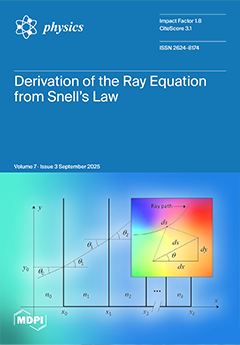Monolayer (ML) molybdenum disulfide (MoS
2) is a typical valleytronic material which has important applications in, for example, polarization optics and information technology. In this study, we examine the effect of continuous wave (CW) laser pumping on the basic optoelectronic properties of
[...] Read more.
Monolayer (ML) molybdenum disulfide (MoS
2) is a typical valleytronic material which has important applications in, for example, polarization optics and information technology. In this study, we examine the effect of continuous wave (CW) laser pumping on the basic optoelectronic properties of ML MoS
2 placed on a sapphire substrate, where the pump photon energy is larger than the bandgap of ML MoS
2. The pump laser source is provided by a compact semiconductor laser with a 445 nm wavelength. Through the measurement of THz time-domain spectroscopy, we obtain the complex optical conductivity for ML MoS
2, which are found to be fitted exceptionally well with the Drude–Smith formula. Therefore, we expect that the reduction in conductivity in ML MoS
2 is mainly due to the effect of electronic backscattering or localization in the presence of the substrate. Meanwhile, one can optically determine the key electronic parameters of ML MoS
2, such as the electron density
ne, the intra-band electronic relaxation time
τ, and the photon-induced electronic localization factor
c. The dependence of these parameters upon CW laser pump intensity is examined here at room temperature. We find that 445 nm CW laser pumping results in the larger
ne, shorter
τ, and stronger
c in ML MoS
2 indicating that laser excitation has a significant impact on the optoelectronic properties of ML MoS
2. The origin of the effects obtained is analyzed on the basis of solid-state optics. This study provides a unique and tractable technique for investigating photo-excited carriers in ML MoS
2.
Full article





